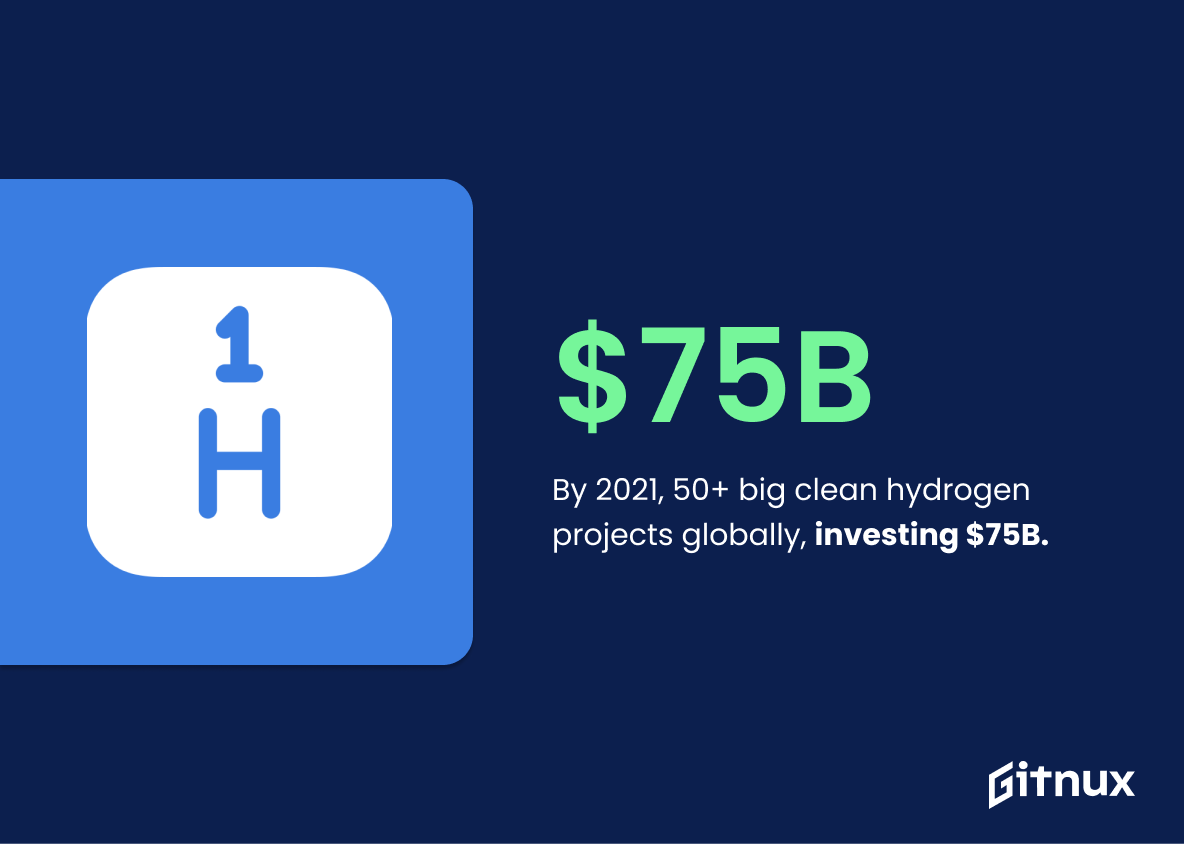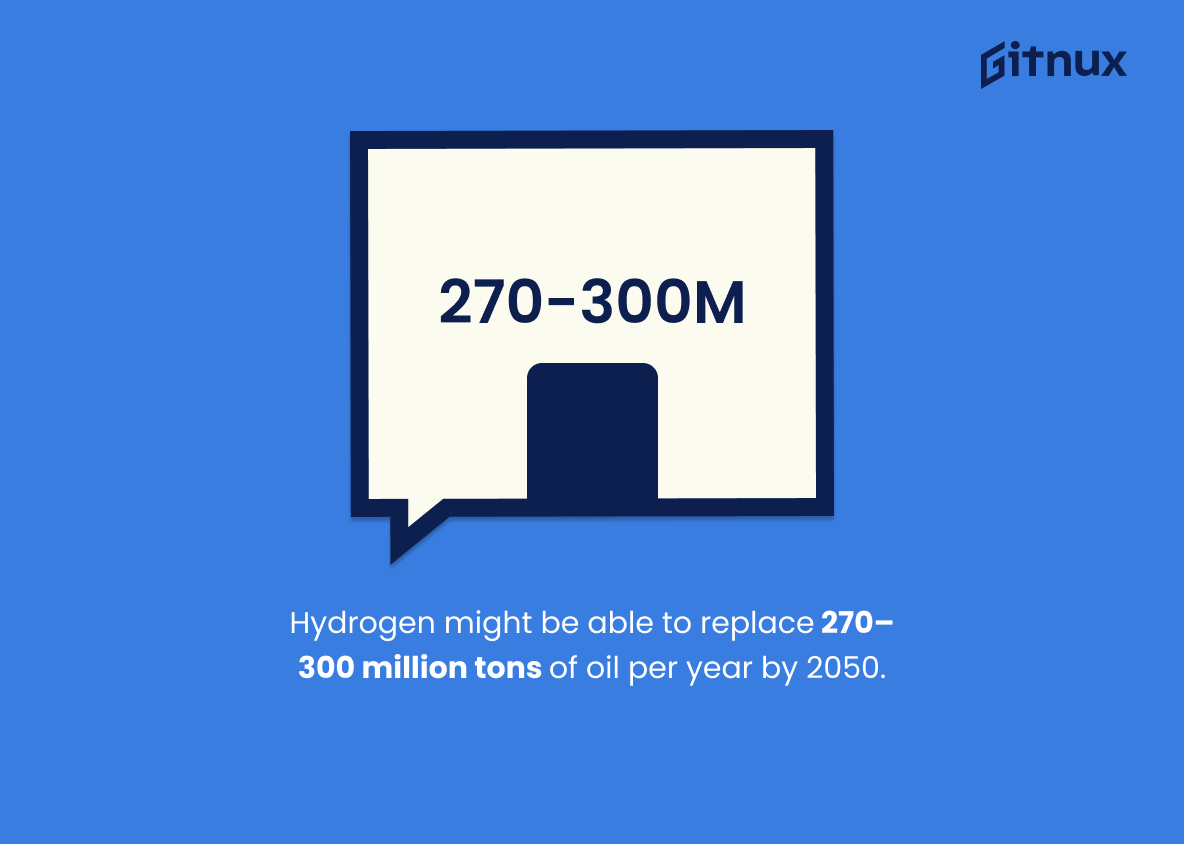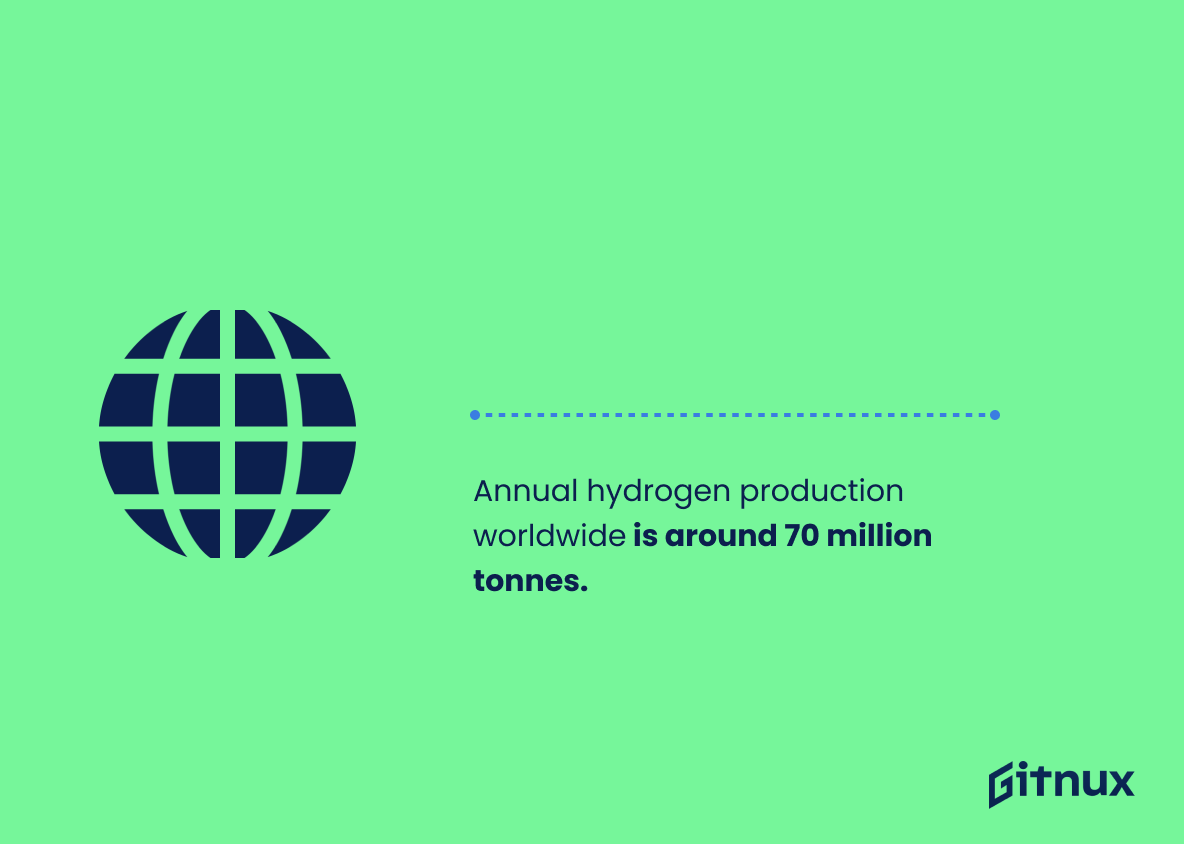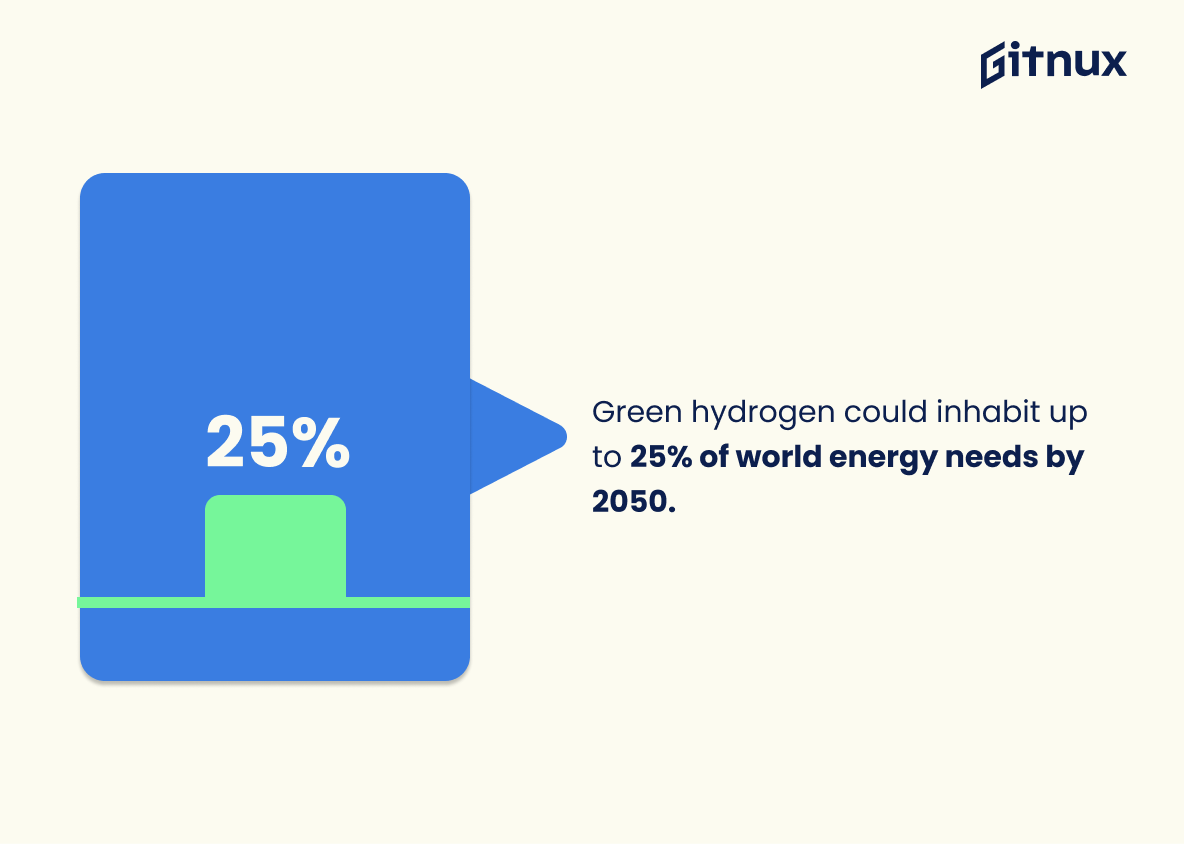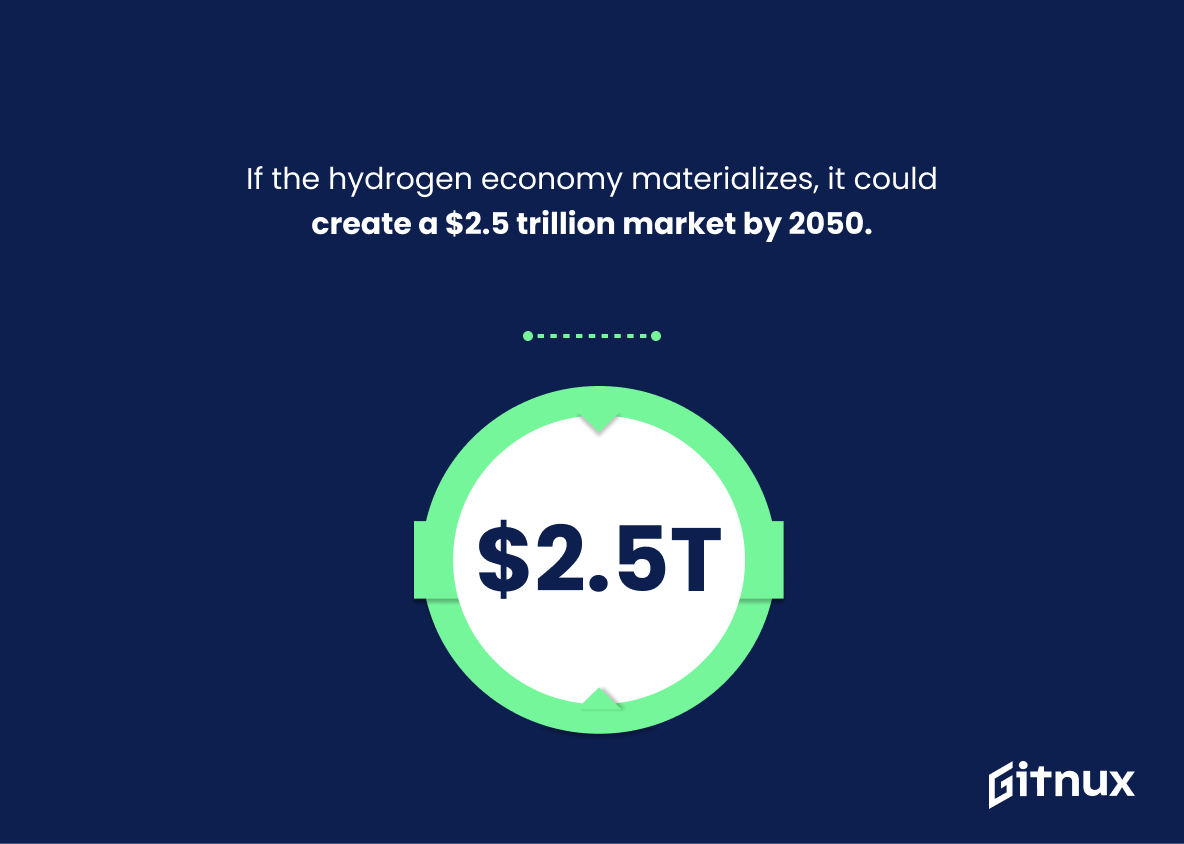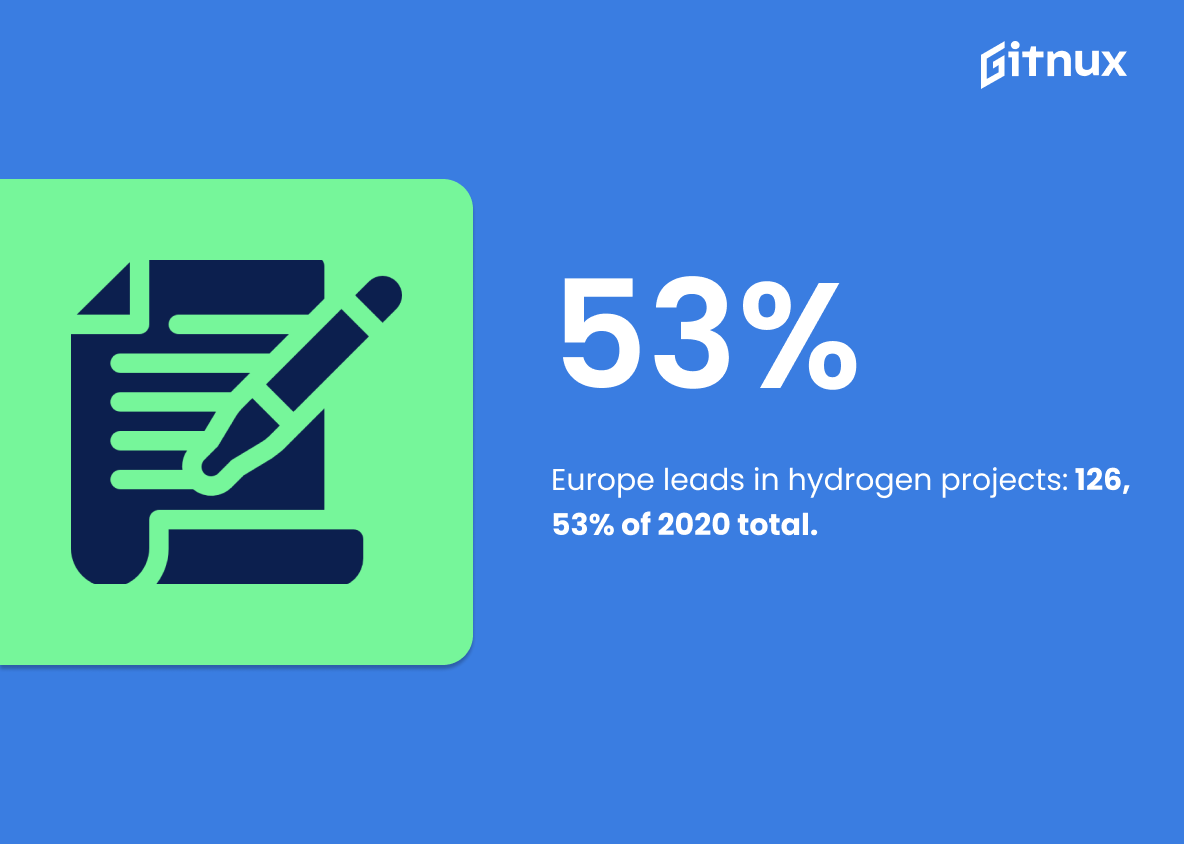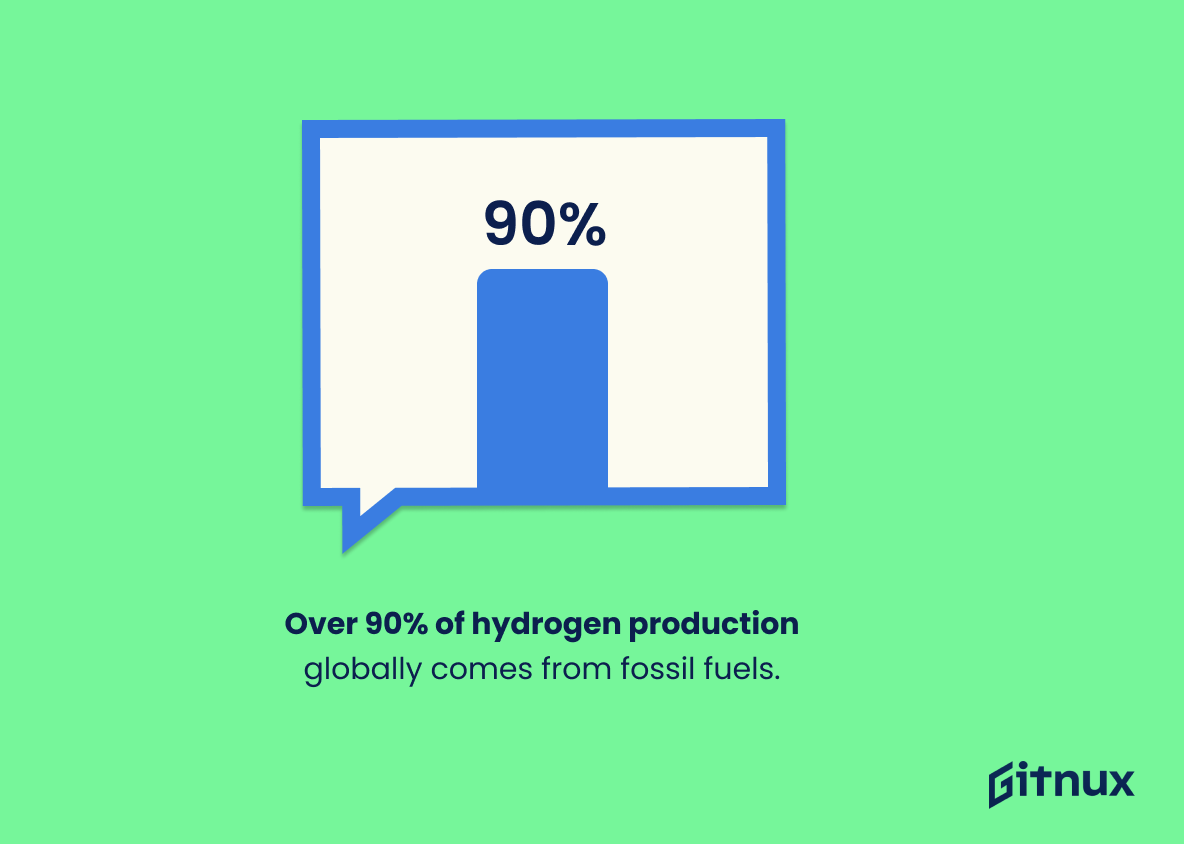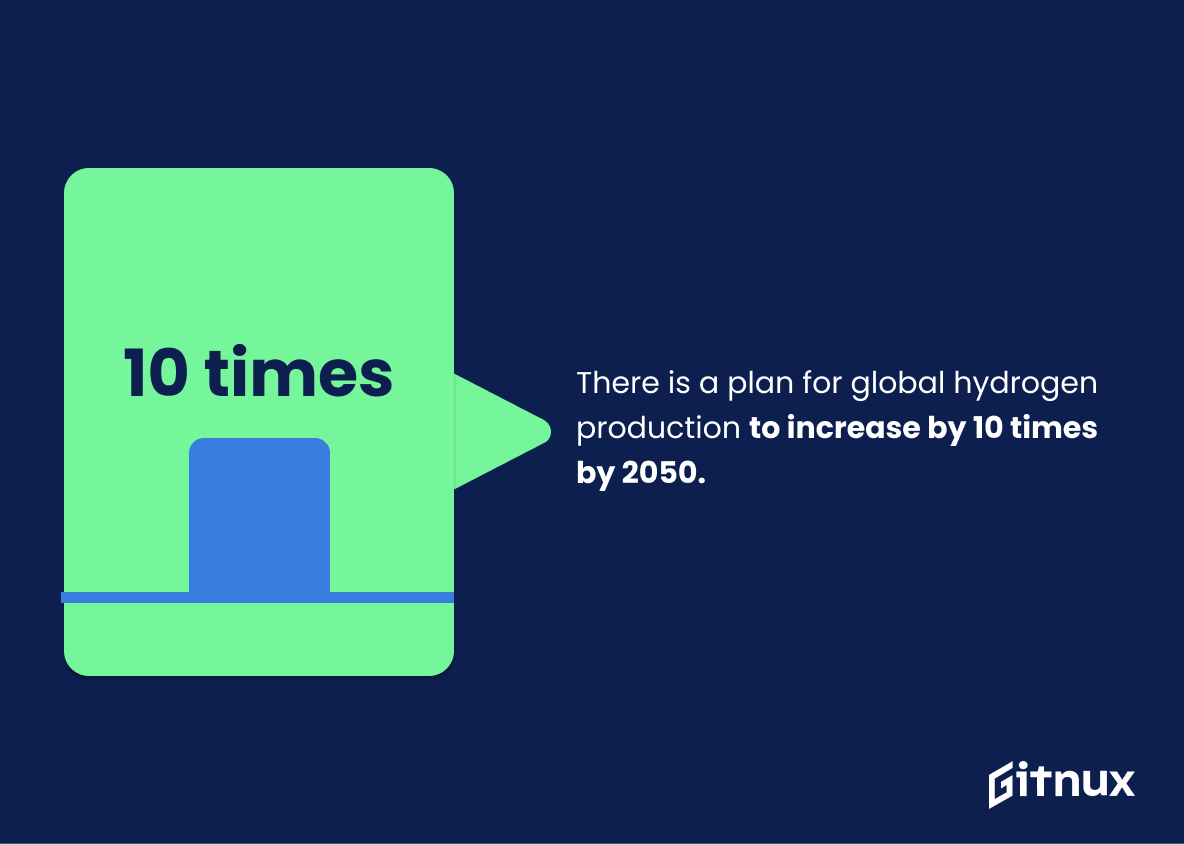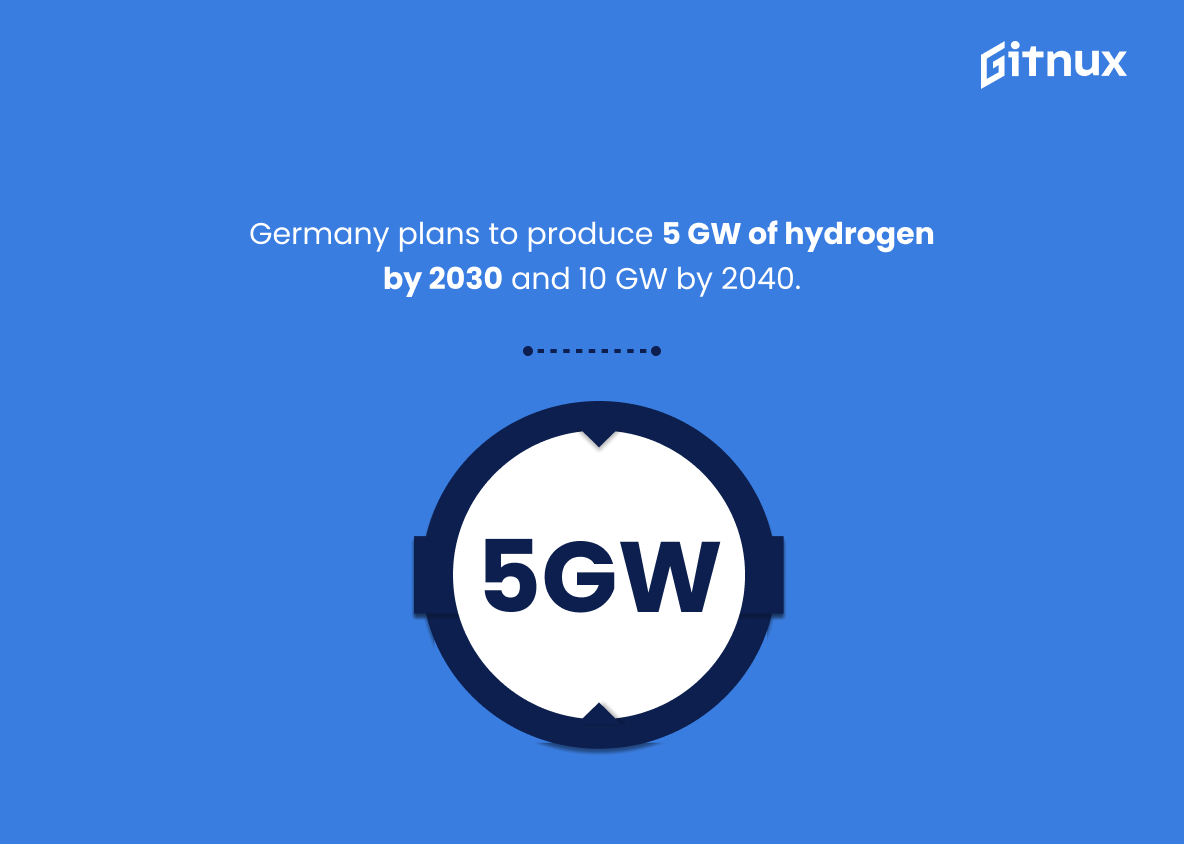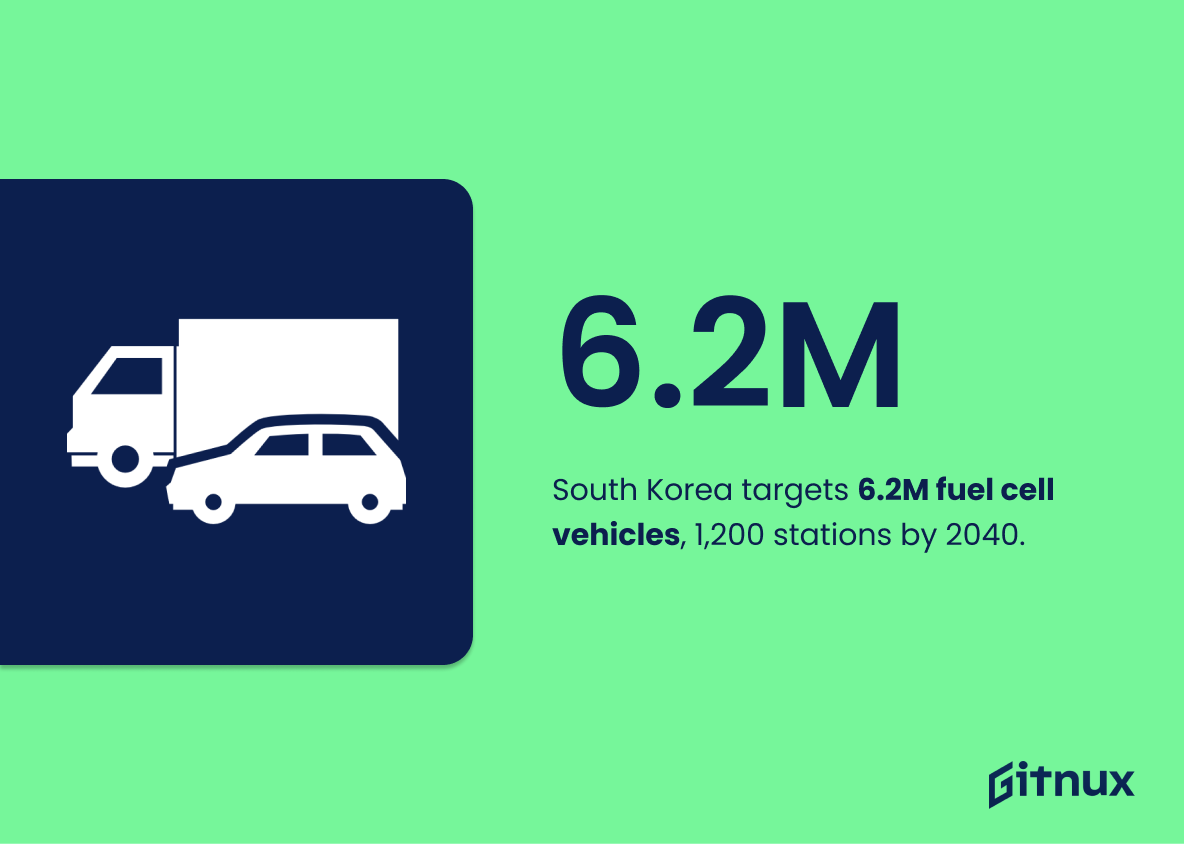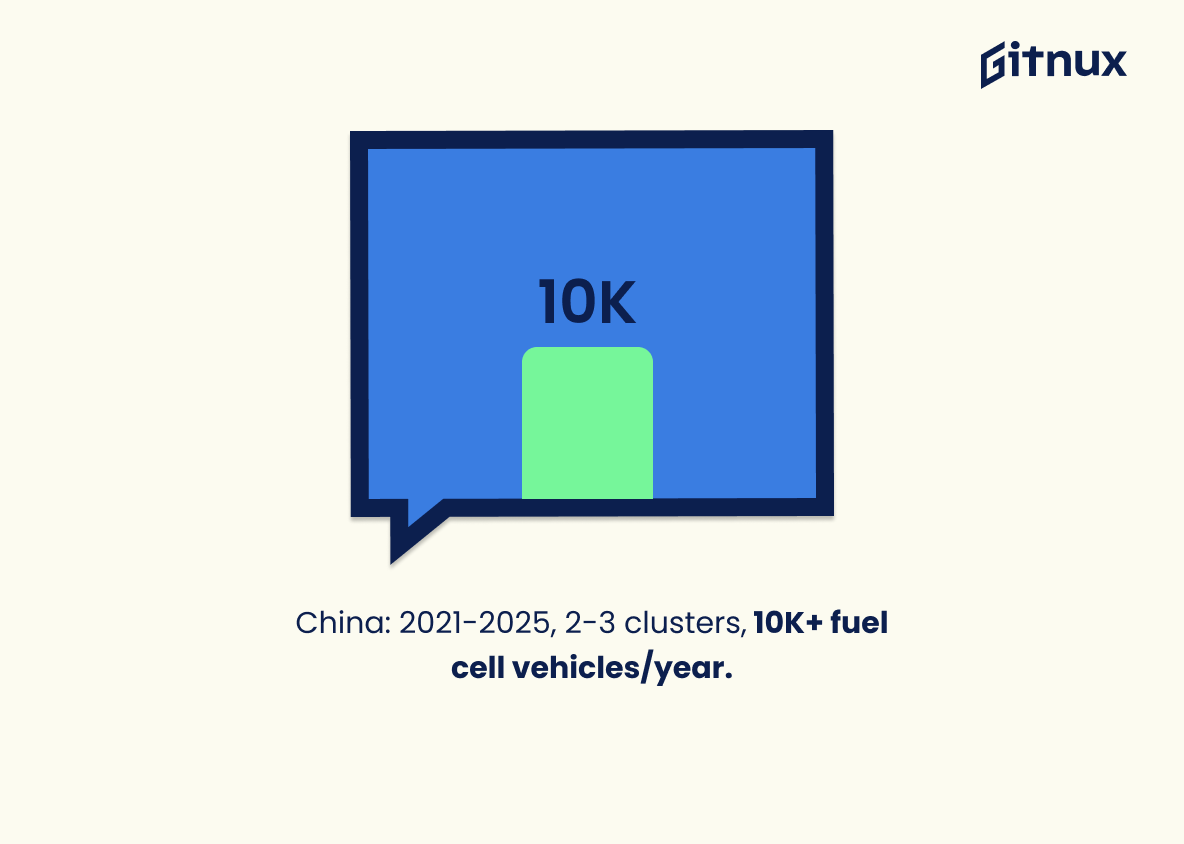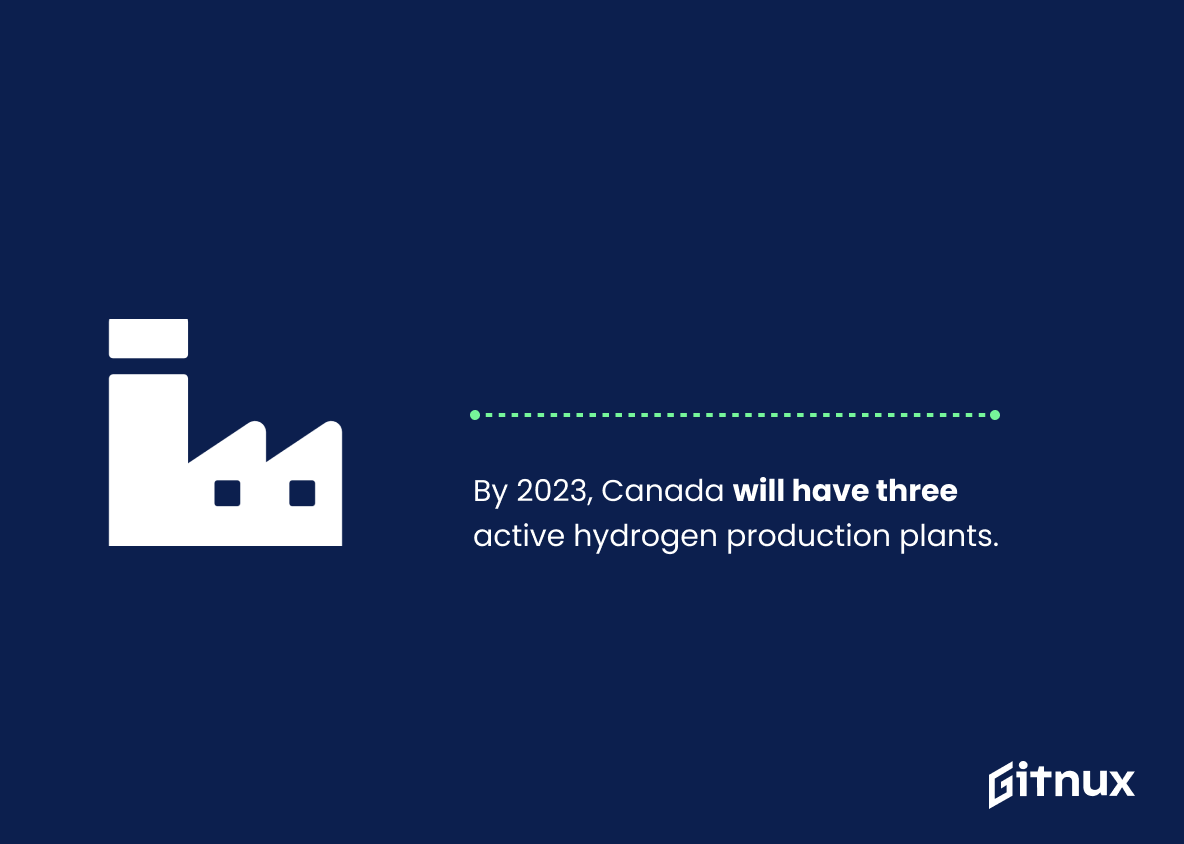The hydrogen industry is at the forefront of the renewable energy revolution, promising a future where clean, sustainable power is the norm. The benefits of hydrogen power, from its almost infinite availability to its potential for zero-emission energy production, have sparked considerable interest from businesses, consumers, and governments across the globe. But where does the hydrogen industry stand today? What are the key statistics defining its growth and potential? In this blog post, we will delve deep into the world of hydrogen industry statistics, providing a comprehensive snapshot of the current state of this exciting sector. We will analyze these figures to shed light on emerging trends, challenges, and opportunities — vital knowledge for investors, innovators, and anyone with an interest in the future of energy.
The Latest Hydrogen Industry Statistics Unveiled
As of 2021, there are more than 50 large clean hydrogen projects globally, with a combined investment of $75 billion.
Unveiling the breadth and ambition of global clean hydrogen initiatives, this alluring statistic unveils an immense and ever-growing commitment towards a greener future. The integration of over 50 large scale clean hydrogen projects globally, with an astounding collective investment sum of $75 billion, provides a refreshing perspective on the scale and potential impact of the Hydrogen Industry.
This data point doesn’t merely measure the extent of hydrogen operations on the global stage, but it underscores the significant faith invested in hydrogen as a viable, future-proof solution towards achieving sustainable energy provisions. This fact goes beyond the numerical presentation; it tells a tale of dedication, progression, strategic planning and a glimpse into a not-so-distant future where clean energy prevails.
Hydrogen might be able to replace 270–300 million tons of oil per year by 2050.
Peering into the crystal ball of Hydrogen Industry Statistics, the potential of Hydrogen replacing 270-300 million tons of oil per year by 2050 unfurls an intriguing conversation point. Picture this: Hydrogen, the lightest and most abundant element, stepping up as a major energy source, delivering a significant oil-offsetting role by mid-century. This potential shift could redefine our energy landscape, transform industries, and push the boundaries of ecological sustainability. It is as though we are witnessing a physics phenomena poised to rewrite economic scripts and environmental narratives worldwide.
Annual hydrogen production worldwide is around 70 million tonnes.
The astounding figure of annual global hydrogen production tipping the scales at around 70 million tonnes, casts a spotlight on the meteoric rise and vitality of the Hydrogen Industry. It conjures an image of an industrial giant that is evolving rapidly, pumping out massive volumes of this versatile, clean energy source. It crescendos the reality of a seismic shift in our energy landscape, fostering discussion on the market dynamics, existing infrastructure, technology innovations, and policy implications woven within this burgeoning industry.
Green hydrogen could inhabit up to 25% of world energy needs by 2050.
In the panorama of Hydrogen Industry Statistics, the projection that green hydrogen could take up to a quarter of world energy needs by 2050 emerges as a powerhouse. This statistic is like a beacon of opportunity, highlighting a transformative potential for the global energy landscape. The data serves as a testament to the potential of the hydrogen industry in reshaping our energy future, showcasing the pivotal role of green hydrogen in our move towards cleaner, more sustainable sources. As we navigate the sea of numbers and trends in these industry statistics, it points to an interesting possible destination – a world increasingly powered by green hydrogen.
If the hydrogen economy materializes, it could create a $2.5 trillion market by 2050.
Imagine stepping into a room filled with possibilities, where each possibility is a golden ticket to a brighter, cleaner, and more prosperous future. The statistic of a potential $2.5 trillion market by 2050 following the realization of the hydrogen economy is like a key to that room. It illuminates the colossal potential resting in hydrogen as an energy source and the extensive commercial opportunities it could bring.
Delving deeply into this statistic, which is sandwiched between today’s reality and tomorrow’s expectations, sheds light on the exponential growth that this budding industry could experience in our lifetime. This bold forecast stimulates conversations on technological advancements, sustainable energy, financial impacts, global markets, and the dynamic fusion of these domains, strengthening the relevance and richness of a blog post about Hydrogen Industry Statistics.
Moreover, it catapults into the spotlight significant industry players, innovators, investors, legislators, and environmentally-conscious consumers that jointly shape the trajectory of this enterprise. Furthermore, it unearths notable implications for the global economic landscape, national security interests, environmental sustainability goals, and the broader energy sector. Consequently, this knowledge propels readers to grasp the scale, scope, and significance of a transition to a hydrogen economy in the forthcoming decades.
Europe has the largest number of hydrogen projects with 126 projects, amounting to 53% of all announced projects till the end of 2020.
Shining a spotlight on this numerical nugget, Europe stands as a thriving hub for hydrogen projects, claiming the lion’s share with a staggering 126 projects. This figure commands a mighty 53% of all announced projects globally till the end of 2020. In the vast canvas of the Hydrogen Industry, these numbers reflect Europe’s pivotal role and its thriving commitment towards developing this clean, alternative source of energy. It is an eloquent testament to the continent’s leadership and pioneering spirit in the march towards a greener future.
Over 90% of hydrogen production globally comes from fossil fuels.
Illuminating the landscape of hydrogen production, this statistic injects a poignant narrative into our current hydrogen industry analysis. A whopping 90% of global hydrogen production is tied, not to the clean, green tech we associate with hydrogen fuel, but to fossil fuels – those culprits of carbon emissions we are so desperately trying to move away from. This narrative thread serves as a stark reminder that even the cleanest forms of energy may harbor skeletons of environmental impact. Moreover, it highlights tremendous opportunities for industries to pivot from fossil fuel-reliant methods to more sustainable hydrogen production techniques. Understanding such dynamics offer a realistic and nuanced lens through which readers can truly examine the complexion of the rapidly evolving hydrogen industry.
In 2020, hydrogen-fuel industry jobs totaled 25,000 in the U.S.
Reflecting on the inherent value of this specific statistic, it can be perceived as an economic barometer, showing not only the vitality, but also the potential growth trajectory of the hydrogen-fuel industry in the U.S. in 2020. The embodiment of 25,000 jobs indicates a robust sector which contributes to the economy as well as the socio-economic wellbeing of thousands of families. Beyond being just a figure, this stat acts as a magnet to attract interest from stakeholders, policy makers and investors, bringing the promise of further investments, focusing on the intensification and diversification of the hydrogen industry. This figure unveils the potential the sector holds for millions of job seekers, solidifying its relevance in discussions around sustainable energy and employment growth.
There is a plan for global hydrogen production to increase by 10 times by 2050.
Such an inspiring vision of a ten-fold increase in global hydrogen production by 2050 underscores the anticipated colossal growth of the hydrogen industry. Within this sweeping transformation lies the potential for hydrogen to emerge as a linchpin in the worldwide energy arena. This statistic, weaving a story of unprecedented advancement, exemplifies the scale at which the hydrogen economy could expand, touching multiple sectors. As such, it acts as a cornerstone for a discourse on hydrogen industry statistics, serving as an overarching framework that encapsulates developing trends, investment prospects, and technological advancements in the field.
Germany plans to produce 5 GW of hydrogen by 2030 and 10 GW by 2040.
In the grand narrative of the hydrogen industry, Germany’s expansion plan serves as a pivotal high point. By aiming to produce 5GW of hydrogen by 2030 and doubling it by 2040, Germany not only sets a precedent for other countries to follow suit but also shines a light on hydrogen’s potential role in future energy landscapes. This major uptick indicates a steady, but robust, propulsion of the hydrogen industry towards becoming a mainstay in global energy production. Addressing these numbers in a blog post would stoke a probing perspective on the industry-wide growth trends, nation-specific strategies, and the future viability of hydrogen as a sustainable energy source. Unquestionably, this serves as a powerhouse statistic that fuels the elucidation of the hydrogen industry’s strategic and transformative trajectory.
South Korea aims to produce 6.2 million fuel cell vehicles and build 1,200 refilling stations across the country by 2040.
The above statistic serves as a lighthouse on the horizon of the hydrogen industry, illuminating how South Korea is positioning itself at the vanguard of fuel cell vehicle production and infrastructure. By 2040, the pledge to roll out 6.2 million vehicles and construct 1,200 refilling stations exemplifies a monumental leap in embracing clean and renewable energy sources. This major commitment underscores the growth potential and scalability of the hydrogen industry, not just within the borders of South Korea, but as a global precedent. It offers an insightful view of the anticipated industry dynamics and, therefore, influences strategic decisions by market participants.
From 2021 to 2025, China plans to form two to three clusters of hydrogen fuel cell vehicles, each with annual sales of more than 10,000 vehicles.
Highlighting this particular statistic offers a sneak peek into the potentially booming future of the hydrogen industry, specifically in the realm of fuel cell vehicles. Think of this as a crystal ball prediction for the next industrial revolution, where China stands at the precipice of producing 20,000 to 30,000 hydrogen fuel cell vehicles annually within the next few years. Through this hard data, readers can gauge the aggressive transition from traditional fossil fuels to green energy solutions, as represented by hydrogen – a symbol of untapped clean energy promise. Furthermore, the statistic infers China’s commitment to environmentally friendly mobility, which could inspire other nations to follow suit, marking a global shift towards sustainable energy resources in the broader hydrogen industry.
By 2023, Canada will have three active hydrogen production plants.
Reflecting on the projection that Canada will possess three active hydrogen production plants by 2023 offers significant illumination on the trajectory of the hydrogen industry. Clearly, this forecast not only validates the escalating demand for hydrogen, but also underscores the commitment of nations like Canada to pioneer the green energy revolution.
In essence, it underscores a shift from conventional fuel sources to environment-friendly alternatives, presenting hydrogen as a viable and sustainable solution. This growth not only impacts the energy sector but also invites socio-economic transformations, employment opportunities and technological advancements. Therefore, every blog post discussing Hydrogen Industry Statistics should feature this projection as the emblem of the industry growth and future potential.
Conclusion
The burgeoning hydrogen industry is poised for extraordinary growth, as evident from the impressive statistics presented. This unparalleled transformation is backed by both governmental agendas and private enterprise initiatives across the globe, aiming to harness the potential of hydrogen as a clean, renewable energy source. From its potential to reduce carbon emissions significantly to its ability to be combined with various other industries for energy storage or transportation purposes, hydrogen holds a promising future. As the demand continues to soar, ongoing research and technological advancements are expected to further fortify the hydrogen industry’s position in the global energy matrix. Thus, the hydrogen industry’s potential is not only reflected in its escalating market figures, but also in its capacity to mold the future of sustainable energy.
References
0. – https://www.energypost.eu
1. – https://www.www.hydrogen.energy.gov
2. – https://www.www.forbes.com
3. – https://www.www.cbc.ca
4. – https://www.www.usatoday.com
5. – https://www.www.marketwatch.com
6. – https://www.www.eesi.org
7. – https://www.www.globenewswire.com
8. – https://www.energy.economictimes.indiatimes.com
9. – https://www.china.ahk.de
10. – https://www.www.spglobal.com
11. – https://www.www.cnbc.com
12. – https://www.www.reuters.com
